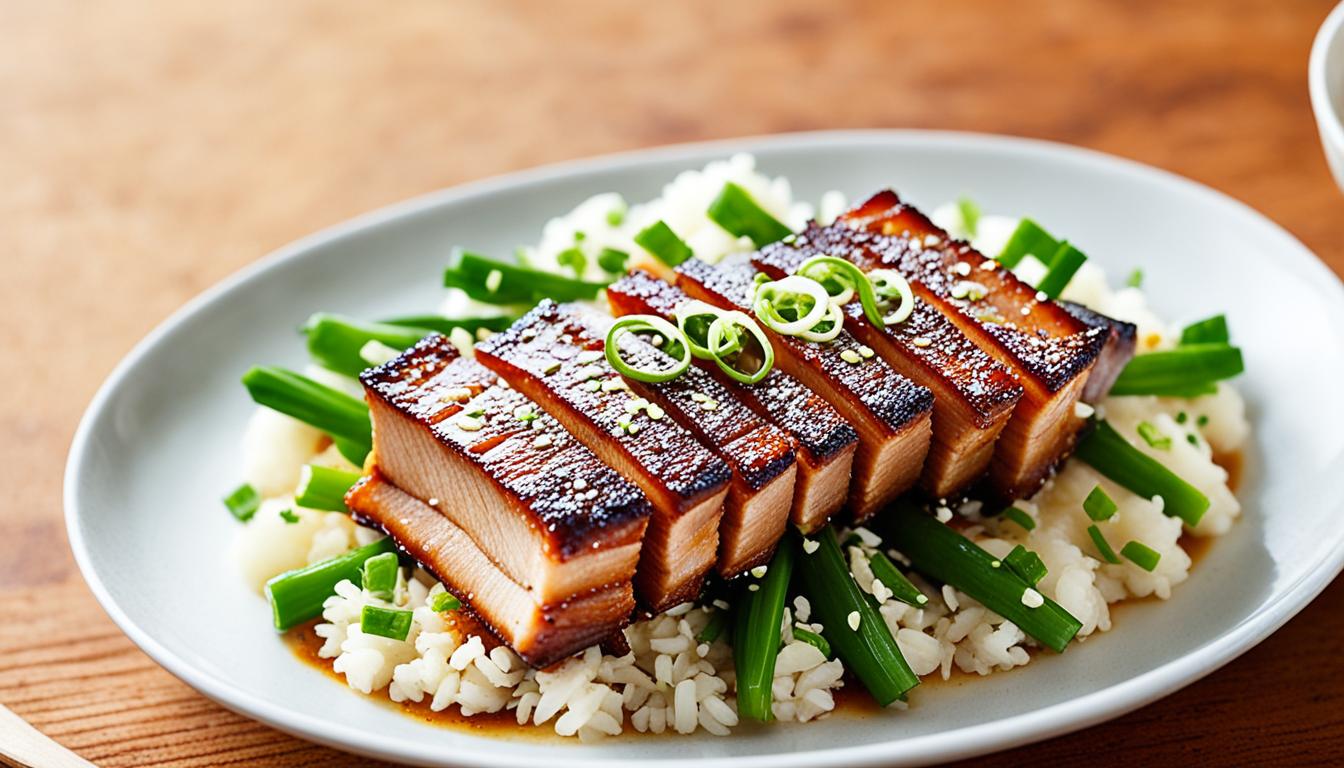If you love Japanese cuisine and have always wanted to try making homemade chasu, we have an exciting recipe for you. But here’s the twist – we’re going to use a pressure cooker to achieve that perfectly tender and flavorful pork belly chasu.
When it comes to chasu, traditionally it is slow-cooked in the oven or simmered on the stovetop for hours to achieve that signature melt-in-your-mouth texture. But what if we could cut down the cooking time without compromising the taste?
Our pressure cooker adaptation promises to give you a similar texture to oven-braised chashu in a fraction of the time. By rolling and tying the pork belly, and then cooking it under pressure, we can achieve a sliceable texture that’s incredibly tender and packed with flavor.
But does it really work? Can a pressure cooker deliver the same results as hours of slow cooking? Let’s dive into our perfect pressure cooker pork belly chasu recipe and find out!
How to Make Pork Belly Chasu in an Instant Pot
Making pork belly chasu in an instant pot is a quick and easy way to enjoy this flavorful Japanese cuisine at home. With the help of a pressure cooker, you can achieve tender, melt-in-your-mouth pork belly that is perfect for ramen or other dishes. Follow these simple steps to create your own homemade chasu using a pressure cooker recipe:
Ingredients:
- 1.5 pounds of pork belly
- 2 tablespoons of oil
- 1-inch piece of ginger, sliced
- 2 green onions, chopped
- 1/4 cup of sake
- 1/4 cup of soy sauce
- 1/4 cup of mirin
- 1 cup of water
Start by heating the oil in the instant pot using the sauté function. Once the oil is hot, sear the pork belly on all sides until browned. This will help enhance the flavor of the chasu.
Add the ginger, green onions, sake, soy sauce, mirin, and water to the pot with the seared pork belly. These ingredients will infuse the meat with delicious flavors as it cooks.
Close the instant pot and set it on high pressure for 65 minutes. Allow the pressure to release naturally once the cooking time is complete. This will ensure that the pork belly is tender and juicy.
After the pressure has been released, leave the pork belly in the pot to cool down. This resting period will allow the flavors to further develop.
Once the meat has cooled, refrigerate it for at least 6 hours. Chilling the pork belly will make it easier to slice into thin, succulent pieces.
When you’re ready to serve, take out the chilled pork belly from the refrigerator and slice it into your desired thickness. The chasu can now be used as a topping for ramen or any other dishes that you prefer.
A great thing about making pork belly chasu in an instant pot is that you can also reserve the cooking liquid for future use. The flavorful liquid can be used as a base for soups, sauces, or even to cook rice or noodles.
Tips and Serving Suggestions for Pork Belly Chashu
For a truly mouthwatering experience, we recommend using fresh ginger and garlic when preparing your pork belly chashu. These aromatic ingredients will elevate the flavor of your dish to new heights.
To make cleanup a breeze, we suggest lining your pressure cooker with a liner before cooking your chashu. This simple step will save you time and effort in the kitchen, allowing you to fully enjoy your delicious pork belly creation without worrying about scrubbing stubborn grease.
If you prefer a leaner cut of meat, feel free to trim any excess fat from the pork belly before cooking. This will result in a more tender and succulent chashu that melts in your mouth with every bite.
The cooking liquid leftover from preparing your chashu is a precious resource that should not go to waste. Use it to add extra flavor to rice or noodles, creating a delightful companion dish that complements the richness of the tender pork belly.
Leftover pork chashu can be stored in the fridge for up to 4 days, allowing you to savor the flavors of this delectable dish throughout the week. Alternatively, freeze the chashu for later use, easily incorporating it into future meals whenever you desire.
For a visually appealing presentation, garnish your chashu with freshly sliced scallions. The vibrant green color adds a pop of freshness to the dish, while the subtle onion flavor enhances the overall taste. Whether served with a steaming bowl of ramen or alongside fluffy steamed rice, experimenting with different toppings and spices allows you to customize your ramen experience to suit your unique palate.
